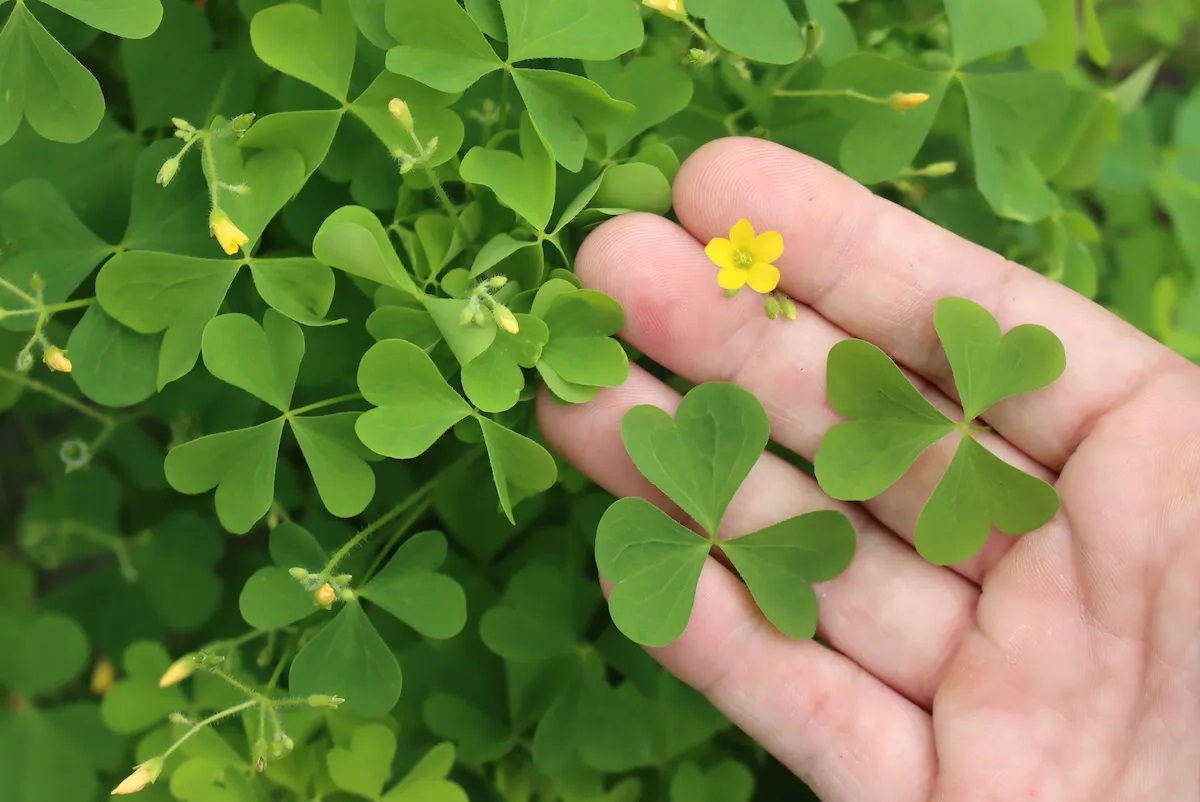
Wood sorrel is a fascinating plant often mistaken for clover due to its trifoliate leaves. Found in various parts of the world, this plant has a rich history and numerous uses. Did you know that wood sorrel is edible and has a tangy, lemon-like flavor? It's often used in salads and soups. Beyond its culinary uses, wood sorrel has been employed in traditional medicine for its potential health benefits. This plant also plays a role in ecosystems, providing food for insects and animals. Whether you're a nature enthusiast, a foodie, or just curious, wood sorrel has something intriguing to offer.
Key Takeaways:
- Wood sorrel is a charming plant with clover-like leaves and edible, tangy leaves. It's rich in vitamin C and antioxidants, making it a great addition to salads for a healthy boost!
- Wood sorrel is not only pretty but also important for the environment. It attracts pollinators, improves soil health, and provides habitat for small insects and animals. Plus, it's a symbol of good luck in some cultures!
What is Wood Sorrel?
Wood sorrel is a small, herbaceous plant found in many parts of the world. Known for its clover-like leaves and delicate flowers, it often grows in woodlands, meadows, and gardens. Here are some fascinating facts about this charming plant.
Botanical Characteristics
Wood sorrel has unique features that make it easily recognizable. Let's explore some of its botanical traits.
- Leaves: The leaves are trifoliate, meaning they have three leaflets. They resemble clover leaves but are heart-shaped.
- Flowers: The flowers are usually white, pink, or yellow. They have five petals and bloom in spring and summer.
- Stems: The stems are slender and can grow up to 15 cm tall. They are often reddish in color.
- Roots: Wood sorrel has a fibrous root system. This helps it anchor firmly in the soil.
Nutritional and Medicinal Uses
Wood sorrel isn't just a pretty plant; it has nutritional and medicinal benefits too.
- Edible Leaves: The leaves are edible and have a tangy, lemony flavor. They can be added to salads or used as a garnish.
- Vitamin C: Rich in vitamin C, wood sorrel can help boost the immune system.
- Antioxidants: Contains antioxidants that help fight free radicals in the body.
- Traditional Medicine: Used in traditional medicine to treat fevers, nausea, and mouth sores.
Ecological Importance
Wood sorrel plays a vital role in its ecosystem. Here are some ways it contributes to the environment.
- Pollinators: Attracts bees and butterflies, aiding in pollination.
- Soil Health: Helps improve soil health by preventing erosion and adding organic matter.
- Habitat: Provides habitat for small insects and animals.
Cultural Significance
Wood sorrel has been part of human culture for centuries. Let's look at some cultural aspects.
- Folklore: In some cultures, wood sorrel is considered a symbol of good luck and protection.
- Culinary Uses: Used in various culinary traditions around the world, especially in soups and sauces.
- Gardening: Popular in ornamental gardening due to its attractive appearance and low maintenance.
Interesting Tidbits
Here are some fun and lesser-known facts about wood sorrel.
- Night Behavior: The leaves fold up at night or during heavy rain, a behavior known as nyctinasty.
Wood Sorrel: Nature's Hidden Gem
Wood sorrel, often overlooked, holds a treasure trove of fascinating facts. This humble plant, with its heart-shaped leaves and delicate flowers, is more than just a pretty face. It's a powerhouse of vitamin C, historically used to prevent scurvy. Its tangy, lemony flavor adds a unique twist to salads and soups, making it a favorite among foragers and chefs alike. Beyond its culinary uses, wood sorrel has been a staple in traditional medicine, known for its anti-inflammatory and antioxidant properties. Whether you're a nature enthusiast, a budding chef, or someone curious about the world around you, wood sorrel offers something for everyone. Next time you spot this little plant on a hike or in your garden, take a moment to appreciate its rich history and myriad uses. Nature's wonders are often found in the most unexpected places.
Frequently Asked Questions
Was this page helpful?
Our commitment to delivering trustworthy and engaging content is at the heart of what we do. Each fact on our site is contributed by real users like you, bringing a wealth of diverse insights and information. To ensure the highest standards of accuracy and reliability, our dedicated editors meticulously review each submission. This process guarantees that the facts we share are not only fascinating but also credible. Trust in our commitment to quality and authenticity as you explore and learn with us.


